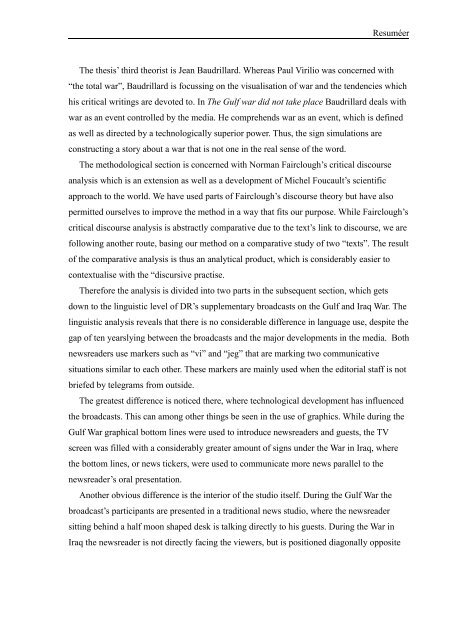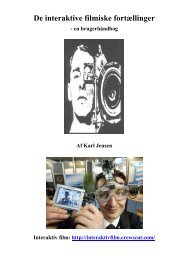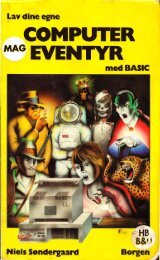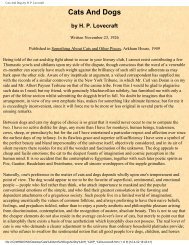Krig, medier og individ - NotatWiki
Krig, medier og individ - NotatWiki
Krig, medier og individ - NotatWiki
You also want an ePaper? Increase the reach of your titles
YUMPU automatically turns print PDFs into web optimized ePapers that Google loves.
Resuméer<br />
The thesis’ third theorist is Jean Baudrillard. Whereas Paul Virilio was concerned with<br />
“the total war”, Baudrillard is focussing on the visualisation of war and the tendencies which<br />
his critical writings are devoted to. In The Gulf war did not take place Baudrillard deals with<br />
war as an event controlled by the media. He comprehends war as an event, which is defined<br />
as well as directed by a technol<strong>og</strong>ically superior power. Thus, the sign simulations are<br />
constructing a story about a war that is not one in the real sense of the word.<br />
The methodol<strong>og</strong>ical section is concerned with Norman Fairclough’s critical discourse<br />
analysis which is an extension as well as a development of Michel Foucault’s scientific<br />
approach to the world. We have used parts of Fairclough’s discourse theory but have also<br />
permitted ourselves to improve the method in a way that fits our purpose. While Fairclough’s<br />
critical discourse analysis is abstractly comparative due to the text’s link to discourse, we are<br />
following another route, basing our method on a comparative study of two “texts”. The result<br />
of the comparative analysis is thus an analytical product, which is considerably easier to<br />
contextualise with the “discursive practise.<br />
Therefore the analysis is divided into two parts in the subsequent section, which gets<br />
down to the linguistic level of DR’s supplementary broadcasts on the Gulf and Iraq War. The<br />
linguistic analysis reveals that there is no considerable difference in language use, despite the<br />
gap of ten yearslying between the broadcasts and the major developments in the media. Both<br />
newsreaders use markers such as “vi” and “jeg” that are marking two communicative<br />
situations similar to each other. These markers are mainly used when the editorial staff is not<br />
briefed by telegrams from outside.<br />
The greatest difference is noticed there, where technol<strong>og</strong>ical development has influenced<br />
the broadcasts. This can among other things be seen in the use of graphics. While during the<br />
Gulf War graphical bottom lines were used to introduce newsreaders and guests, the TV<br />
screen was filled with a considerably greater amount of signs under the War in Iraq, where<br />
the bottom lines, or news tickers, were used to communicate more news parallel to the<br />
newsreader’s oral presentation.<br />
Another obvious difference is the interior of the studio itself. During the Gulf War the<br />
broadcast’s participants are presented in a traditional news studio, where the newsreader<br />
sitting behind a half moon shaped desk is talking directly to his guests. During the War in<br />
Iraq the newsreader is not directly facing the viewers, but is positioned diagonally opposite





